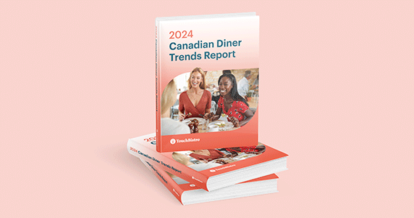If you want to open a restaurant, the first thing you need to do is create a restaurant business plan. This essential document serves as a blueprint for your vision and details all the different steps you’ll need to take in order to turn your business dreams into reality.
However, if you’ve never written a business plan before, the process can seem a little intimidating. So to help you get started, we’ve put together a complete guide to writing a business plan for your restaurant. In this guide, we’ll cover:
- What is a business plan?
- How and when to write a restaurant business plan
- The 7 sections of every business plan
- A free restaurant business plan template
What is a Restaurant Business Plan?
A restaurant business plan is a written document that outlines your business goals and how you will go about achieving those objectives. Put simply, a business plan acts as a written roadmap for a new restaurant from a financial, operational, and marketing perspective. Additionally, a restaurant business plan is also an important document for attracting outside financial investments – especially if you do not have an existing track record.
Though the length of a business plan varies from business to business, this type of document usually spans 15 to 20 pages. All business plans also tend to have the same basic elements, including an executive summary, a detailed description of the business, its services, and its products, a market analysis, an operations plan, and a financial analysis.

Why You Need a Business Plan
As mentioned above, a restaurant’s business plan is a very important document, because it serves as a step-by-step guide for bringing your new business to life. By putting all the necessary information in your business plan, you’ll be able to clearly navigate each stage of the journey – from construction to daily operations.
Your business plan is also essential for raising money from investors. Opening a restaurant is expensive and often you’ll need capital from outside investors. Your business plan can help to convince investors to provide you with funding by showing them that you have a well-throughout plan for success and a sound financial strategy.

Download this customizable restaurant business plan template to create a professional business plan for your new venture.
How to Write a Restaurant Business Plan: The 7 Sections Your Business Plan Template Should Include
While no two business plans are alike, they all include a few common elements. Below, we’ll explain the process of writing a restaurant’s business plan, including the seven key sections to include and what to write in each. You can also follow along and start filling out your own business plan – digitally or on paper – by downloading our restaurant business plan template.
1. Executive Summary
Look at any restaurant business plan example and you’ll see that it starts with an executive summary. The executive summary for a restaurant business plan introduces your new business and serves as a summary for your vision. The goal of this section is to provide an overview of what will be discussed in your business plan and to entice readers (likely investors) to want to know more.
In your executive summary, be sure to touch on your restaurant mission statement, your proposed concept, and how you’ll execute your business plan. You should also list any business partners and, if you’re targeting investors, detail the funding requirements.
And while this section is important, remember to keep it concise. Aim for 600 words max to encourage your reader to dive further into your business plan.
2. Business Description
A business description section should follow your executive summary. The purpose of this section is to provide your reader with a high-level overview of your restaurant idea and to answer key questions that investors may have, such as the business concept, service model, and ownership structure.
Describe your restaurant concept in detail by providing information on the following:
- Business structure: Is your restaurant a sole proprietorship, partnership, or something else?
- Concept: Define your concept and what makes it unique compared to other restaurants. Be clear on the defining theme for your restaurant and what type of cuisine you will serve. Do you have any restaurant names in mind? Include them here.
- Service Model: Explain what level of service you will offer – whether that’s limited service, full service, or something in between.
- Menu: Include a small sample menu in your business plan and explain the inspiration behind the menu.
- Design and Layout: Provide an overview of your restaurant interior design and layout. Touch on key elements such as plateware, lighting, uniforms, and more.
- Management and Ownership: Provide more information about yourself and the management team you’ve assembled for your new restaurant, highlighting any relevant experience that will aid in your success.
Keep in mind that this section can easily come across as a bit dry and mundane – especially for investors who have read dozens of business plans. Think about how you can make your business idea stand out with passionate language and unique details.
3. Target Market and Market Analysis
Whether you’re buying or leasing, this section is where you describe the specific location of your new restaurant and the current market conditions. In addition to general information about your target market, you also want to explain your unique positioning in the market, your ideal customer profile, and how you’ll make your restaurant stand out.
In this section, you’ll clearly define:
- Location: Explain the location (or prospective location) of your new restaurant and why you chose that specific area.
- Target Audience: Include both demographics and psychographics.
- Market Need: Describe the market need your restaurant will satisfy. Maybe you’re a coffee shop appealing to millennials who crave immersive coffee experiences.
- Positioning and Strategy: Descibe how you’ll meet your market need. Using the coffee shop example, you may choose to provide guided tours of your roastery or host workshops on making coffee.
- Competition and Opportunities: This includes both direct and indirect competition. Research the market by visiting your competition, seeing how they do things, and pinpointing what you can do better. You can then lay all this information out for investors by sketching out a SWOT analysis.
- Competitive Advantage: List your competitive advantage. Start by looking at your competition and see where you fit in.
- Market Trends: Find statistics to prove there’s demand for your concept. For example, a simple Google search for coffee demand in the U.S. yields ample results.
4. Marketing Plan
Your marketing plan section details the restaurant marketing ideas, strategies, and tactics you’ll employ to get the word out about your restaurant. This section should go into detail about how you plan to market your restaurant, and after you open.
For instance, you might want to hire a PR team to drum up excitement ahead of your grand opening. And then after you open, you might want to leverage local food influencers to grow your social media presence.
5. Operations Plan
Your operations section is where you get into the nitty gritty of how your restaurant will operate once you’re up and running.
In this section, include details about:
- Your Team: Who will be working at your restaurant? If you haven’t filled any positions yet, simply list the roles that need filling.
- Supplier Relationships: List your suppliers across various categories like food, alcohol, cleaning services, and more.
- Technology: What’s the best restaurant POS system for your venue? Will you be using third-party food delivery apps or a direct online ordering system?
- Insurance: Ensure you follow mandatory restaurant insurance requirements and research any other special coverage you may need.
- Licensing: Licenses you’ll probably require include a business license, liquor license, music license, sign permit, and food handler’s permit.

Download this customizable restaurant business plan template to create a professional business plan for your new venture.
6. Financial Analysis and Growth Plan
Your financial analysis is one of the last sections of your business plan, but it’s also one of the most important sections. In fact, many investors may skip straight to this section to determine how viable your idea is and whether your business is an attractive investment (or not).
Make sure you complete a financial forecast that includes the following:
- Pre-opening or startup costs (you may need to get some restaurant startup quotes)
- Financing, loans, and other funding
- An investment plan and budget (using a restaurant budget template may be helpful)
- A sales forecast
- A projected profit and loss (P&L) statement
- A break-even analysis
- Expenses and expected cash flow
7. Appendix
Adding an appendix section is optional, but highly recommended. This section is a great place to include charts, plans, graphics, pictures, a detailed budget, or any other material investors may find useful.
In your appendix, you may want to include:
- A sample menu
- Blueprints or pictures of your restaurant floor plan
- Additional financial charts and figures
- Design mockups
Ready to get started? Grab the template!

9 Tips for Writing a Great Plan
Now that you understand what key elements to include in your restaurant’s business plan, let’s look at 9 tips for writing yours.
1. Use a Business Plan Template
Before writers start writing, they usually have a basic outline that acts as a template – a starting point – for their idea. By following the same approach when writing your business plan, the entire process will be much smoother. And lucky for you, we have a free restaurant business plan template available to help you get started.

Download this customizable restaurant business plan template to create a professional business plan for your new venture.
2. Create a Detailed Outline
Using our template, create an even more detailed outline. Make your way through all the sections of your business plan and jot down key points under each section.
3. Embrace the “Good Enough” Mindset
As you move through the sections of your plan, you may get stuck and have nothing to say. If this happens, make a note to come back to it later and move on. You can always include more detail after you’ve done more research.
4. Research to Find Statistics and Inspiration
You will need to research to find statistics to back up your arguments, with specific sections requiring more research than others (i.e. the “Market Analysis” section). You may even want to find a sample restaurant business plan that will spark your creativity and give you ideas on how to better present yours.
5. View Your Plan as a Work in Progress
Writing a business plan takes time as you get a grip on the details and fine-tune your message. The key is to embrace this process and view your business plan as an ever-evolving document you can add to over time.
Ready to kickstart your restaurant business plans?
6. Know Who Your Audience Is
Who are you writing for? Investors? Just you and your staff? Your audience will dictate the contents of your plan, the level of detail, and what language you’ll use.
If you’re writing for investors, your plan will need to be more detailed than if you’re writing for internal stakeholders. And because investors may have limited knowledge of restaurant terminology, avoid industry jargon and instead use plain English. It’s helpful to look at another restaurant business plan example to see how these types of documents are written.
7. Use Visuals, Charts, and Tables
Use images, graphics, tables, and charts to explain complex ideas, add color to your document – both literally and figuratively – and present specific information.
8. Summarize Each Part of Your Business Plan
After you’ve completed a section of the plan, write a short summary that highlights the critical details and key takeaways of that section.
9. Write Your Executive Summary Last
An executive summary for a restaurant business plan summarizes your entire document so you should try to write it last – after you’ve covered all the details.
The Importance of Business Plans in the Restaurant Industry
Writing a restaurant business plan is essential – even if you already own a restaurant. A business plan acts as a blueprint you can follow, reduces stress, and boosts investor confidence. And when you start with a restaurant business plan template, the process moves that much faster.

Download this customizable restaurant business plan template to create a professional business plan for your new venture.
Download our free inventory template







